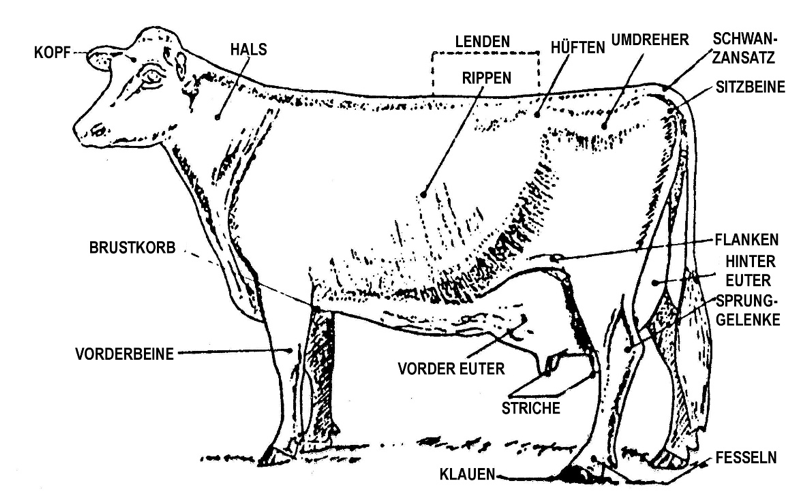What Is aAa®?
aAa® Animal Analysis is a dairy cattle breeding guide created in 1950 by Vermont Holstein breeder and classifier William A. Weeks based on his detailed study of the form and function of dairy cows and bulls. While working as a classifier for the Holstein Friesian Association of America in the late 1940s, Bill Weeks observed that all too often, when a bull bred a cow, the resulting daughter was not as good as her dam. He also observed that good quality cows sometimes produced poor quality offspring when mated with high quality bulls, and surprisingly high quality offspring were sometimes produced by below average quality parents.

Although Bill enjoyed his work as a classifier, he felt frustrated that he could only evaluate what a dairy breeder already had in his herd. His goal was to figure out how breeders could mindfully and consistently produce the best possible offspring from the good animals they had.
Using detailed worksheets based on the true type classification score card, Bill Weeks and his associates documented the form and function of thousands of dairy cows and bulls. After studying this documentation, Bill identified naturally occurring patterns in the way animals’ body parts are formed and function together. He first used the terms “round” and “sharp” to describe the qualities cows need and bulls provide in a simple way that breeders could use when making matings. After several years, Bill realized that the terms “round” and “sharp” alone did not adequately describe the relationship of body parts that determine the form and function of an animal, so he further refined the aAa® Animal Analysis system to include the six aAa® numbers we know today.
aAa® Animal Analysis has been used by North American dairy breeders since 1950, expanding over the years into Europe, New Zealand and Australia. The aAa® service mark is used by aAa® approved analyzers in the United States, Canada, Mexico, Australia and New Zealand, and the Weeks® service mark is used by aAa® approved analyzers in European countries and Japan. Most major AI companies in North America, Europe and Oceania have their bulls analyzed and make this information available to customers.
What are the benefits of using aAa®?
A cow’s form determines how well she can function, including will to milk, efficiency of feed conversion, calving ease, health, fertility, mobility and longevity. A uniform herd of balanced cows that are free from extremes is more profitable as well as easier and more enjoyable to work with.
In a 2018 survey of 42 aAa® customers in the U.S. and Europe, who work with a variety of dairy breeds, the most frequently reported benefit of aAa® use was increased longevity, followed by improved chest width, increased uniformity of stock, improved ability to hold condition, increased overall productivity and better foot health.
In a 2016 study of 35 herds in Denmark who had used aAa® for at least 5 years, the average lifetime production of cows in aAa® herds was 4,072 kg (8,958 lbs) higher than the Danish average.
But don’t just take our word for it! Read testimonials from aAa® users around the world.
